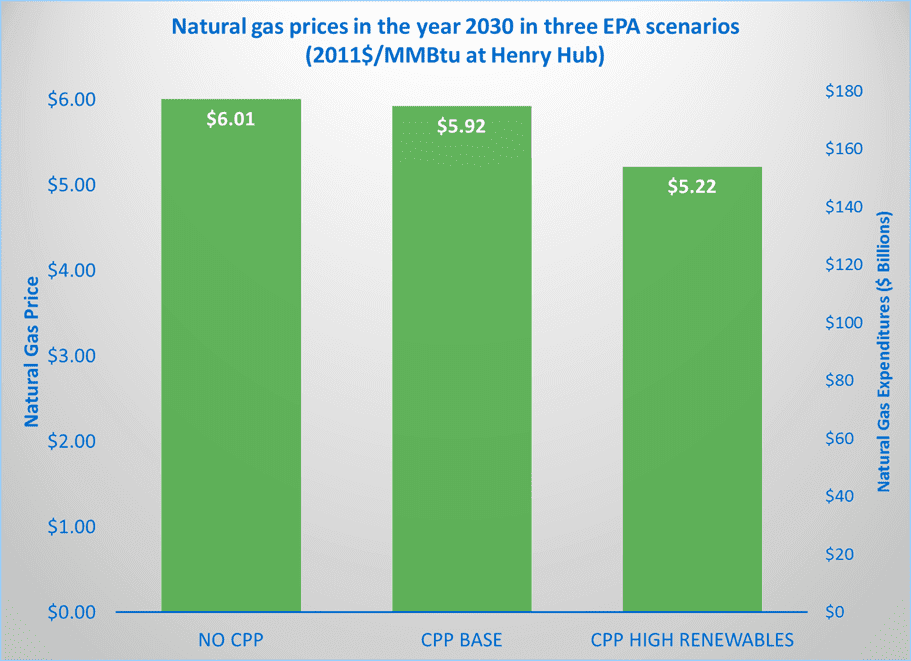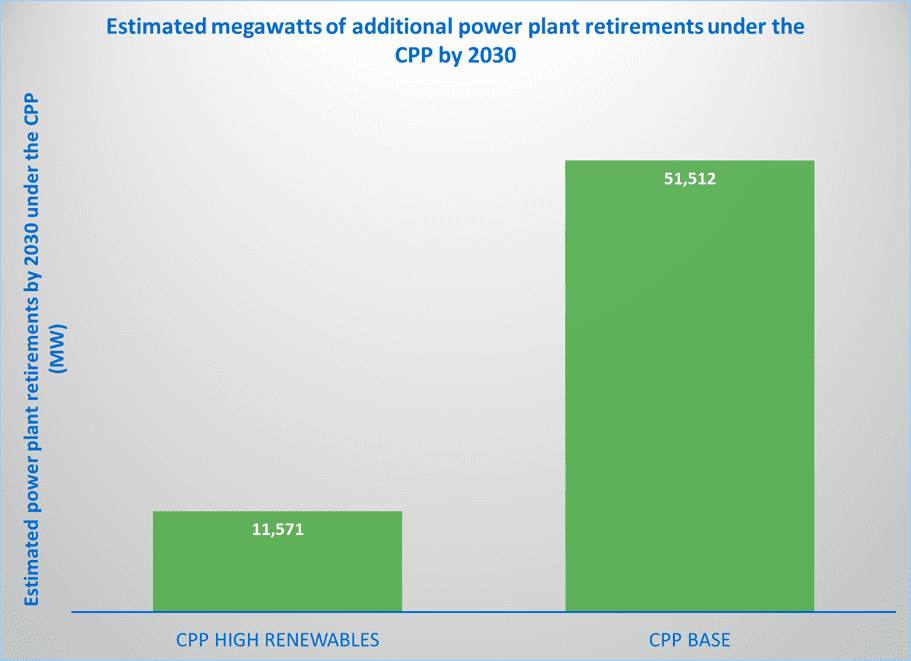EPA: Meeting Clean Power Plan with wind saves consumers billions on natural gas purchases
EPA recently released modeling results confirming that wind energy protects consumers against fuel price increases and provides states and utilities with valuable flexibility as they develop their Clean Power Plan (CPP) compliance plans. EPA’s analysis shows natural gas prices are 12-13 percent lower when more renewable energy is used for CPP compliance, saving consumers around $20 billion per year on gas purchases.
A key benefit of stably-priced wind energy is that it keeps natural gas price spikes in check by diversifying a utility’s energy mix. Wind and other renewable energy resources are unique in that their fuel is free so the cost of energy can be locked in for decades up front, much like a fixed-rate mortgage, while all other energy sources are subject to volatile and often increasing fuel costs that are paid directly by consumers. For example, wind energy saved consumers in the Mid-Atlantic and Great Lakes states $1 billion over two days alone when natural gas prices spiked and conventional generators failed during the polar vortex event in January 2014.
This benefit is particularly valuable now because the Clean Power Plan is expected to increase reliance on the use of natural gas for electricity generation. As shown in the chart above, with larger amounts of renewable energy, natural gas prices were 12% lower in 2030 compared to the base CPP compliance case that relied more heavily on natural gas, and 13% lower relative to a scenario without the CPP in place. This translates into $19 billion per year in consumer savings on natural gas purchases relative to the scenario that used less renewable energy for CPP compliance, and $22 billion in annual consumer gas price savings relative to a case without the CPP in place, or about $60 per person in the U.S. per year. Using wind energy to diversify our energy mix and protect against fuel price increases has widespread benefits because natural gas is widely used throughout the economy, for everything from home heating to fertilizer and chemical production to electricity generation.
A more surprising benefit of zero emission wind energy is that it provides states and utilities with valuable flexibility for finding the lowest-cost CPP compliance mix, allowing them to make less drastic changes to their power systems.
For example, because a MWh of gas generation emits nearly half as much CO2 as a MWh of coal generation, nearly twice as many MWh of coal generation must be displaced by gas to achieve the same level of emissions reductions versus if a zero-emission compliance option were used instead. As a result, zero-emission resources like wind reduce the magnitude of changes that are required in the generation mix, which typically reduces the need for power plant retirements and the need to build replacement generating capacity.
In EPA’s modeling, this benefit translated into 40,000 MW of fewer power plant retirements in the high renewable case relative to the base CPP compliance case. As shown below, the high renewable CPP case only saw 11,600 MW of power plant retirements above the no CPP baseline by 2030, versus 51,500 MW in the base CPP compliance case that relied more on energy efficiency and natural gas generation. As a result, states that are concerned about the potential economic and reliability impact of power plant retirements should look to zero-emission solutions like wind energy to provide them with more flexibility for compliance options.






